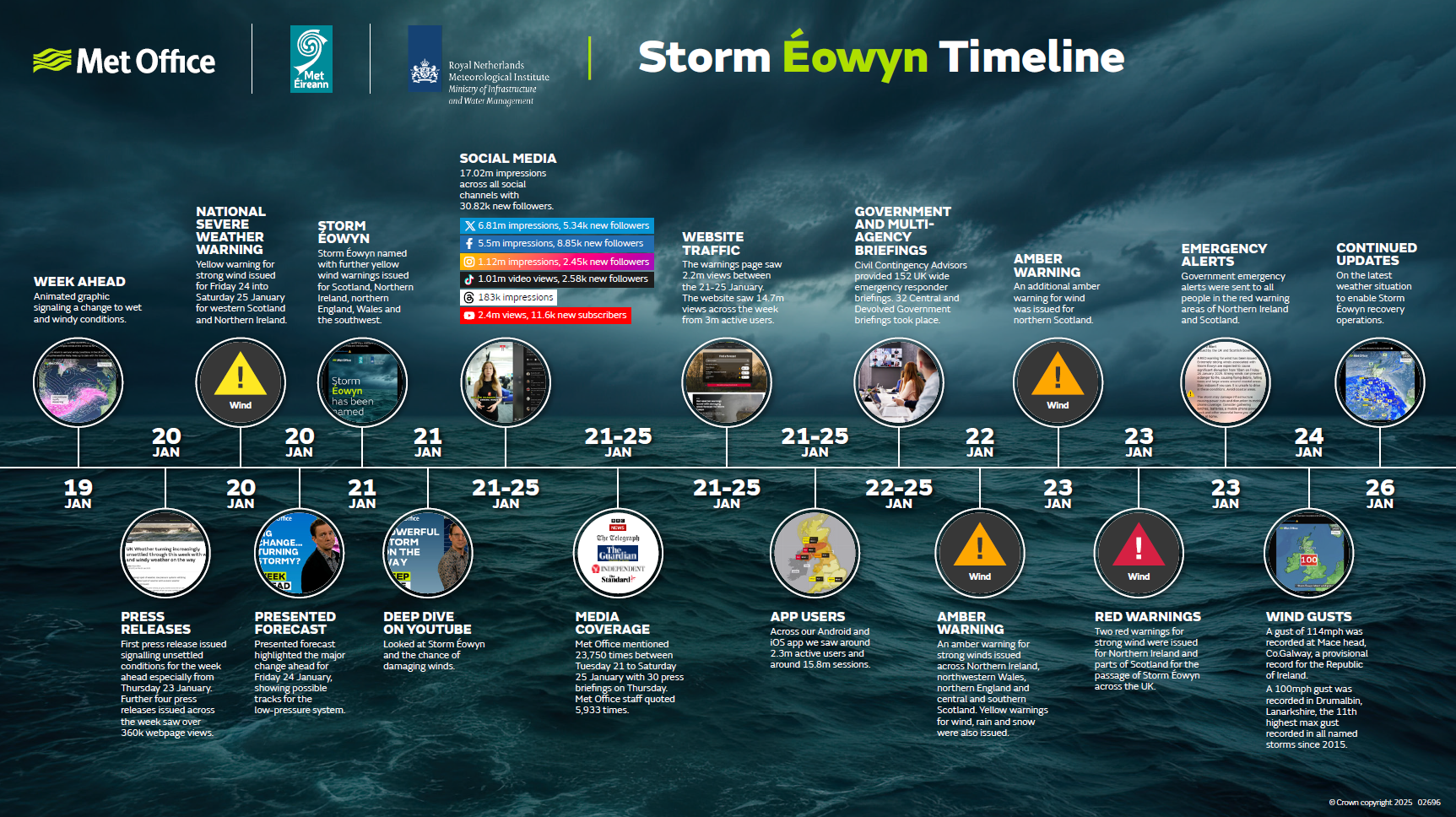10 years since Storm Abigail: a decade of named storms
Author: Press Office
00:01 (UTC) on Mon 10 Nov 2025
Today marks 10 years since the Met Office named its first storm, Storm Abigail, launching a public-facing initiative that has since become a cornerstone of weather communication in the UK.
In the decade since, the Western Europe naming group – which includes the Met Office in the UK, Met Éireann in Ireland and KNMI in the Netherlands – have named a total of 70 storms, giving severe weather a clear identity for the media and public.
Will Lang, Chief Meteorologist at the Met Office said: “Ten years ago, Storm Abigail became the first UK storm to be named. Today, storm names are part of our national vocabulary.
“But storm naming is more than a label, it’s a public safety tool that makes severe weather easier to remember, talk about, and follow.
“We’ve named 70 storms since 2015, and each one helps communities prepare, keeps emergency services coordinated, and strengthens public awareness of severe weather risks.”
Storm naming: 10 years in numbers
- 70 storms named by the Western Europe naming group
- 12 named storms – the most in a season (2023/24)
- 2 named storms – the least in a season (2022/23)
- 122 mph – highest hourly gust speed recorded. Storm Eunice (2022) Needles, Isle of Wight
- 941.9 hPa – lowest mean sea level pressure (MSLP) recorded. Storm Éowyn (2025) Isle of Tiree, Inner Hebrides
- 264.4 mm – highest daily rainfall total. Storm Desmond (2015)
- 40,000+ – public submissions of storm names in 2025
Full details of each storm over the past 10 years can be found on our Storms Centre page.
A decade of impact and engagement
Over the past decade, storm naming has become a vital part of how we communicate weather risks, helping people better understand and prepare for severe weather.
For Storm Éowyn for example, post-event surveys suggest:
- 99% of people within the red warning area were aware of the warnings
- 95% of them took action
This included doing things like preparing a power cut kit or shopping early. Storm naming helps to raise awareness of the threat, with accompanying advice encouraging people to take practical steps that will help them stay safe.
It’s not just about informing the general public. For emergency responders and local authorities, storm naming provides a shared reference point that improves coordination and planning. It allows agencies to communicate more effectively with each other and with the public, streamlining the deployment of resources and enhancing preparedness.
The below graphic shows a timeline of communications around Storm Éowyn.

Looking to the future
Storm naming will continue to play a crucial role in keeping communities safe as the UK continues to see highly variable and, at times, severe weather.
The Met Office will continue to invest in forecasting capability and public engagement, ensuring that each named storm helps people prepare, respond, and stay resilient.
Watch: Is climate change influencing storms in the UK?

Updated at 15:35 (UTC) on Wed 12 Nov 2025





